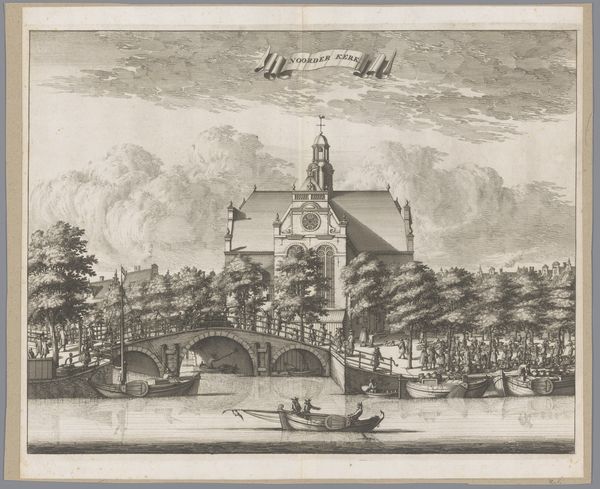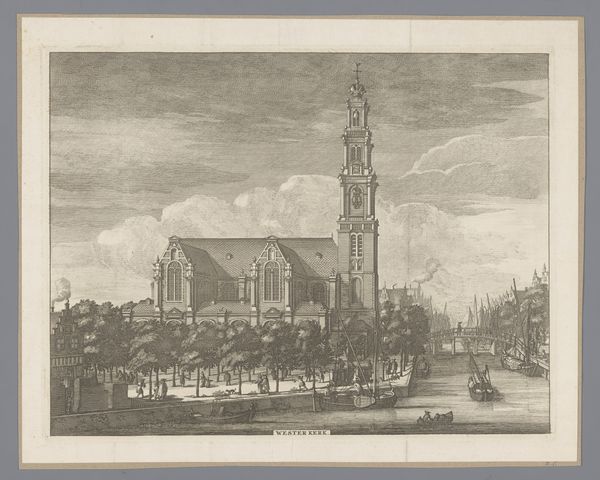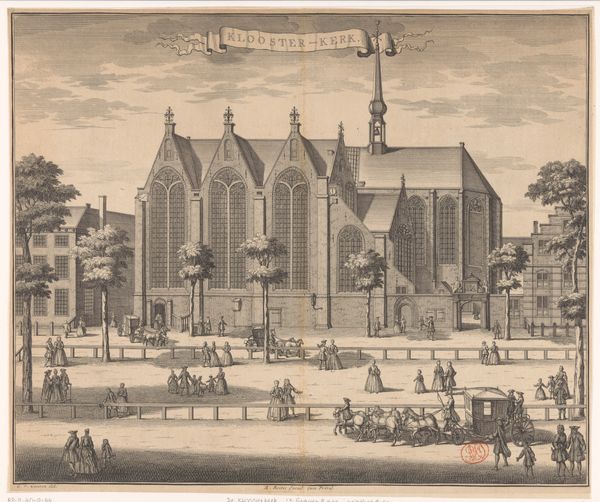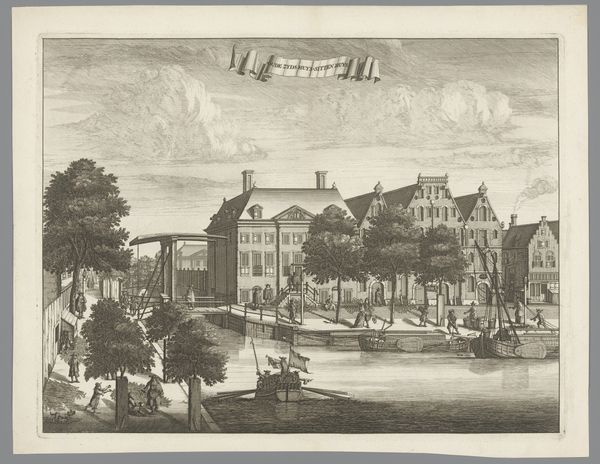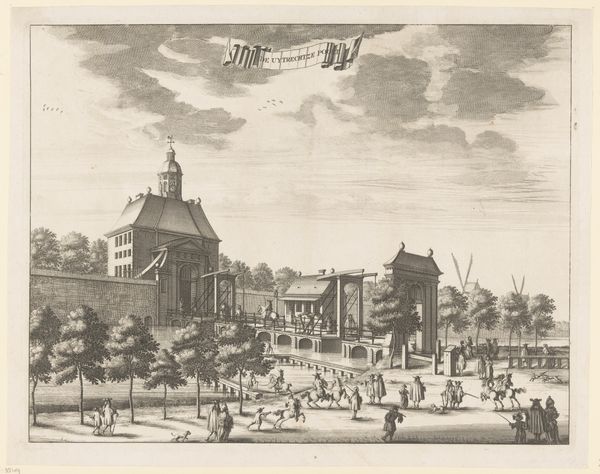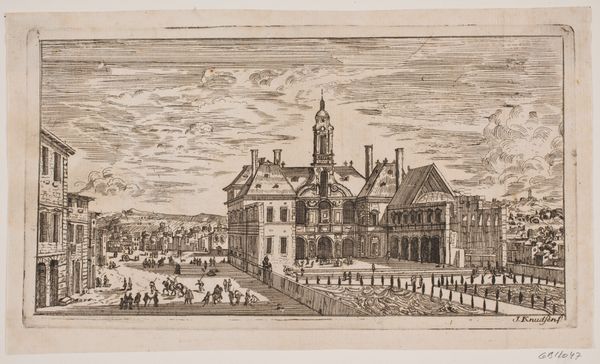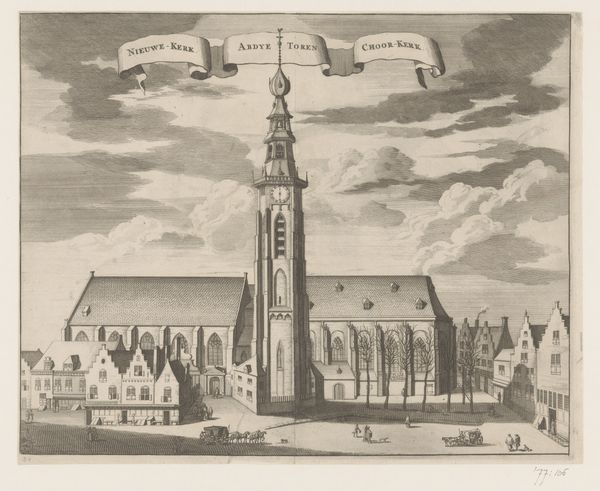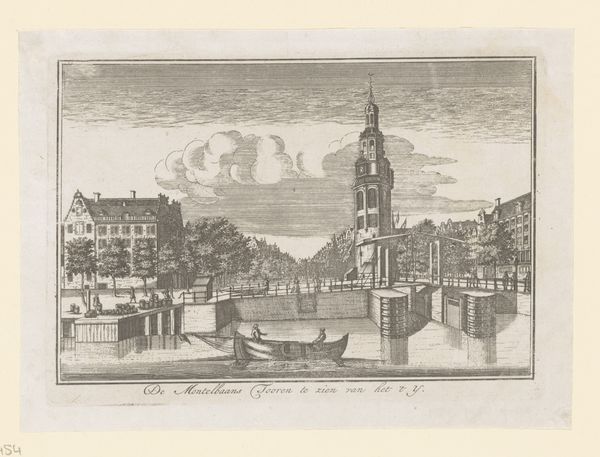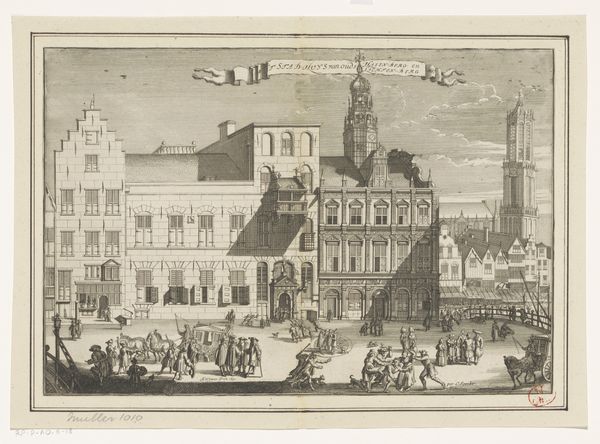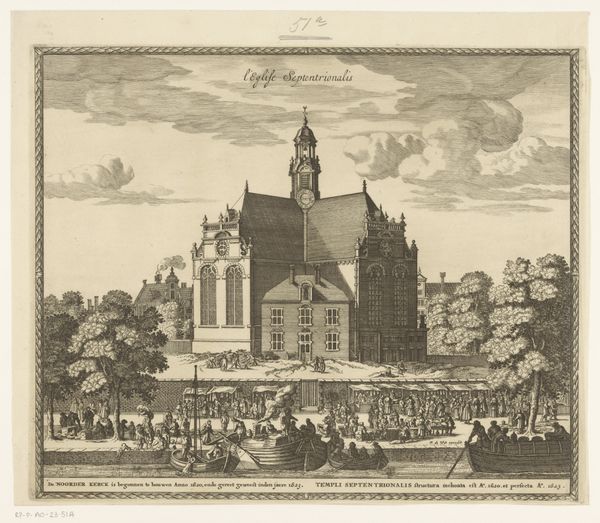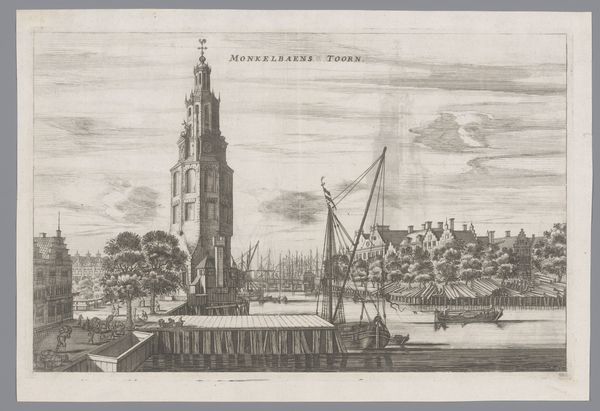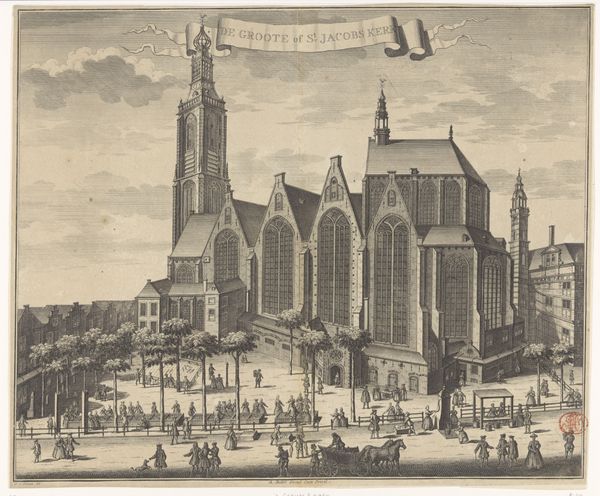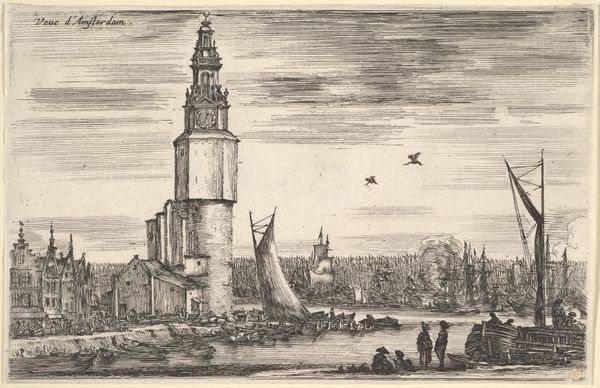
print, etching, engraving, architecture
#
narrative-art
#
dutch-golden-age
# print
#
etching
#
landscape
#
etching
#
cityscape
#
engraving
#
architecture
Dimensions: height 274 mm, width 354 mm
Copyright: Rijks Museum: Open Domain
Editor: So, we’re looking at “Gezicht op de Westerkerk te Amsterdam,” an etching and engraving from around 1693. It’s an amazing cityscape! I’m struck by the way the church dominates the skyline, yet it's still part of the everyday hustle of the canals. How does the Westerkerk function within its cultural moment as shown here? Curator: That’s an insightful observation. Notice how the print elevates the church – Westerkerk, as proudly stated by the banner at the top -- yet grounds it firmly within the commercial activity of Amsterdam. This visual tension speaks volumes about the role of the church in Dutch society at the time. Consider that during the Dutch Golden Age, the Netherlands was not only a powerful economic force but also a republic grappling with issues of religious tolerance and civic identity. The Westerkerk, built for Protestant worship, becomes a symbol of both spiritual and economic ascendancy, almost a celebration of mercantile success blessed by God, in a way. Do you think prints like this catered more to local pride or to attracting outside investment and admiration? Editor: That’s a good question. Perhaps both? It could serve as a promotional tool, showing Amsterdam's prosperity to potential investors, but also instilling pride among its citizens. This image highlights civic achievement and religious legitimacy intertwined. It’s also striking how such a detailed scene exists in monochrome, it gives it a feeling of being ‘official.’ I suppose printing allowed this view to proliferate, something a painting wouldn't do so easily at the time. Curator: Exactly! The medium is crucial. Printmaking allowed for wider distribution, democratizing access to this image and ideal of Amsterdam. This circulation created and reinforced a shared visual language about the city’s identity and ambitions. Think about how this contrasts with courtly art elsewhere in Europe. Editor: So this isn't just a pretty picture; it's actively shaping and reflecting the social and political landscape. I had never considered that art would perform that kind of nation-building service in the past! Thanks for the enlightenment! Curator: And thanks for bringing fresh eyes. These images gain power through their historical journey, continually shaped by how people view and use them, much as they shaped society in their time.
Comments
No comments
Be the first to comment and join the conversation on the ultimate creative platform.
